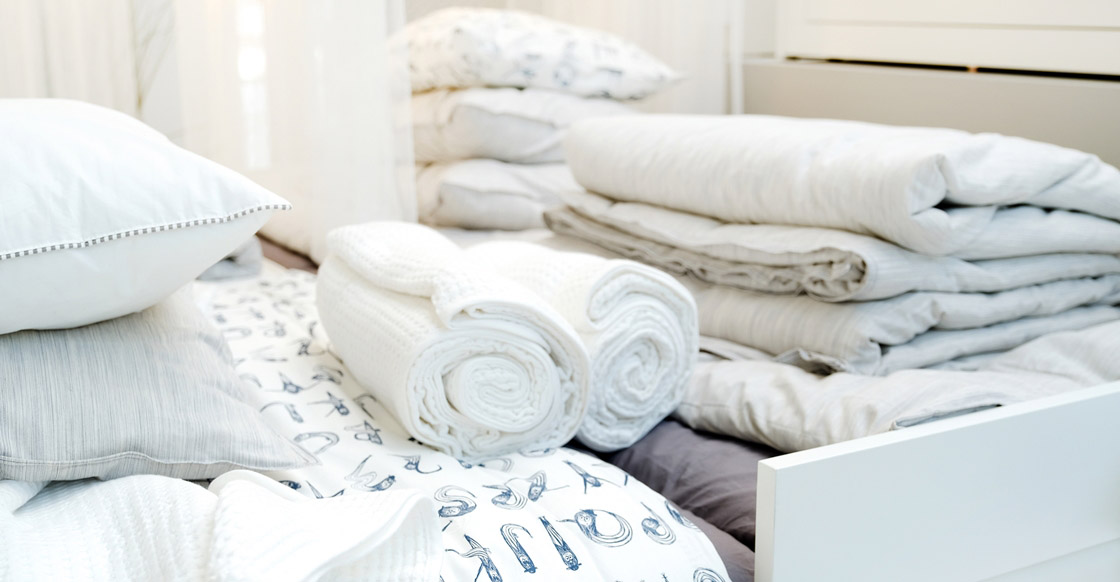Self-storage units are often used by people to make the process of moving home less stressful. They offer secure, cost-effective storage that can help by providing a temporary solution if there is a gap between moving-out and moving-in days. Or just as a “holding station” that helps to keep your feet clear as you prepare for your move.
One of the most stored items in these instances is soft furnishings. These are often bulky and non-essential items that are just additional clutter during a home move. This is why many people elect to store them in advance and leave them in storage until they are needed.
However, soft furnishings can be tricky to store correctly. Here are our top expert tips on how to store soft furnishings properly.
How to store soft furnishings like a pro
If used correctly, a self-storage unit will keep your belongings safe for as long as you need. But there are pitfalls to watch out for. In this section, we discuss what methods to use when storing soft furnishings to avoid falling foul of pitfalls such as dampness, mildew, mould, and nasty odours.
The following tips for storing soft furnishings can be applied to most soft furniture types, including:
- Cushions
- Bedding
- Sofas
- Pouffes
- Towels
- Fabric hangs and throws
Soft Furnishing Storage Tips
The following tips will make sure your soft furnishings remain in perfect condition during their time in storage.
Clean Thoroughly Before Storing
This is the most important rule when it comes to self-storage. It is always tempting just to worry about the cleaning afterwards and throw everything in storage “as is”. The problem is that any dirt or dust present in the fabric can quickly become a victim to mould or mildew.
In everyday use, this isn’t a problem. Such blemishes are rarely left long enough to get established as something nastier! Cleaning is one sure way to make sure that your soft furnishings don’t deteriorate in storage.
It is always important to check the manufacturer’s instructions before cleaning. To keep on the safe side, you can test any cleaning method on a small inconspicuous area first.
Make sure it is completely dry and through aired before storing
Storing even slightly damp soft furnishings can be a recipe for disaster. Dampness can quickly spread and cause mould, mildew, and strong odours. In bad cases, this can spread to other furnishings and belongings.
To prevent this, it is best to have stopped using the furnishings at least a few days before they go into storage. This allows plenty of time to thoroughly clean, dry, and properly air soft furnishings before they are stored. It also ensures that they are not victims of any last-minute spills or accidents just before they are placed in storage.
Plan where they are placed in storage
This is as simple as making sure that they aren’t placed at the bottom of a teetering tower of heavy items. Although this is just common sense, it still gets overlooked on many occasions.
Cushions and fabrics that have spent time squashed under heavy belongings may never regain their true shape. But storing like this can also be dangerous as such stacks can easily topple over.
It is also recommended that soft furnishings are not stored in cramped and tight corners or crammed into any nook and cranny. This can prevent fabrics from “breathing”, and this can be another potential cause of dampness, mould, and mildew getting a foothold.
Packing soft furnishings
Care should also be taken when packing soft furnishings. Here are some tips to help you successfully pack your soft furniture:
- Place moisture absorbers in with the furnishings
- Sofas and larger items can be wrapped in plastic, dust sheets, or breathable fabrics
- Don’t cram too many items into one packing case or wrap them too tightly
- Be careful with those folds as they can cause permanent creasing – try to store similar items together to avoid unnecessary folding
- Use quality packing materials to ensure your soft furnishings stay in perfect condition
- For especially delicate fabrics, consider using breathable storage wraps
- Don’t opt for the biggest storage box. Large boxes are difficult to handle and, when full of soft furnishings, can be over-heavy. Additionally, wherever possible, use the same-sized storage box. This makes stacking easier, saves room, and is less likely to result in a stack of boxes collapsing.
Conclusion
If stored correctly, there is no reason that soft furnishings won’t stay in perfect condition for years. Simply by following the simple hints and tips listed above, you can be sure that your soft furnishings will be in prime condition when it comes time to collect them.
At Belfast Self Storage, we want all our customers to get the most out of their storage units. We hope that our guides help make sure your belongings are stored in the optimum conditions.


